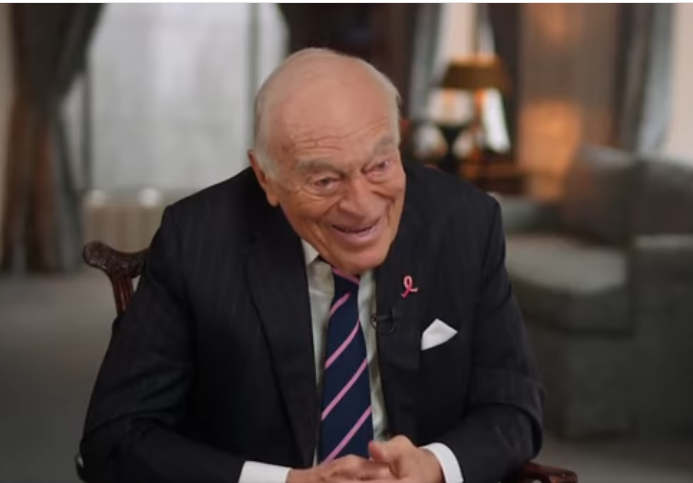With a net fortune of $15 billion at the time of his death in June 2025, Leonard Lauder exemplifies a remarkable fusion of charitable influence, cultural patronage, and entrepreneurial foresight. Being Estée and Joseph Lauder’s eldest son, he inherited not just a renowned cosmetics company but also the will to turn it into a worldwide empire that resembled the most powerful luxury companies in Europe.
Estée Lauder Companies had yearly revenues of less than $1 million when Leonard joined the company in 1958. He significantly raised the company’s profile by expanding its reach throughout Europe and Asia, purchasing brands including Clinique, Bobbi Brown, MAC, Aveda, and La Mer, and ultimately going public in 1995. Under his direction, the brand developed into a tremendously successful global business that brings in over $15 billion a year.
Leonard Lauder – Personal, Career, and Financial Snapshot
| Attribute | Details |
|---|---|
| Full Name | Leonard Alan Lauder |
| Date of Birth | March 19, 1933 |
| Date of Death | June 2025 (aged 92) |
| Birth Place | New York City, USA |
| Nationality | American |
| Profession | Businessman, Philanthropist, Art Collector, Author |
| Net Worth (2025) | $15 billion |
| Parents | Estée Lauder, Joseph Lauder |
| Spouse(s) | Evelyn Lauder (d. 2011), Judy Glickman Lauder (m. 2015) |
| Children | William P. Lauder, Gary Lauder |
| Education | Wharton School, University of Pennsylvania |
| Known For | Former CEO & Chairman of Estée Lauder Companies |
| Major Achievements | Expanded Estée Lauder into global powerhouse, took company public in 1995, built portfolio of over 25 brands |
| Philanthropy | Donated $1B Cubist collection to Met Museum, co-founded Alzheimer’s Drug Discovery Foundation, supported Breast Cancer Research Foundation |
| Publications | The Company I Keep: My Life in Beauty (2020) |
| Cultural Influence | President of Whitney Museum of American Art, major supporter of New York’s cultural institutions |
| Reference Source |
His money was especially helpful in influencing charities and the arts. One of the most significant Cubist collectors, Leonard gave the Metropolitan Museum of Art 78 masterpieces, including pieces by Picasso and Braque. In addition to being incredibly successful in changing the Met’s holdings, this $1 billion gift was a very strong indication of his conviction that private wealth should enhance public culture.
He also donated over 120,000 old postcards to organizations, providing a remarkably inexpensive look at commonplace history through visual culture. His position as president of the Whitney Museum of American Art further demonstrated the extraordinary versatility of business executives in influencing cultural and public life.
In addition to his artistic endeavors, his charitable contributions to medical causes were remarkably comparable in significance to his business achievements. In order to secure research funding where traditional financiers were hesitant, he and his brother Ronald co-founded the Alzheimer’s Drug Discovery Foundation. He continued the work started by his late wife Evelyn as honorary chairman of the Breast Cancer Research Foundation, sponsoring programs that have greatly lowered treatment hurdles.
His journey from humble family beginnings to founding one of the most significant beauty enterprises was vividly depicted in his 2020 book, The Company I Keep: My Life in Beauty. It exposed a man who was fervently committed to both societal advancement and financial prosperity.
Leonard’s tale was equally shaped by his personal existence. After decades of marriage to Evelyn Lauder, he later wed photographer Judy Glickman Lauder, who is well-known for her own charitable endeavors. William and Gary, his offspring, carry on the family tradition, guaranteeing that stewardship and leadership are incredibly dependable over the generations.
Leonard established himself as a highly inventive character, on par with patrons like the Gettys and philanthropists like David Rockefeller, by utilizing both cultural patronage and astute financial acumen. His generosity has flourished during the last ten years, changing the definition of responsible wealth use.
Despite being significant, his net worth seems more like a reflection of his impact than a figure. He transformed not only beauty but also art and medical research by streamlining processes and freeing up talent across industries through strategic alliances, acquisitions, and contributions.


